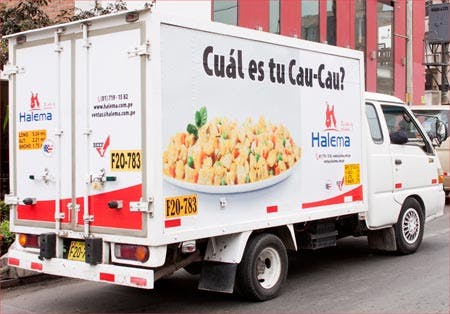U.S. Beef Tripe Ads Roll into Peru
Published: Oct 22, 2013

Seven Halema vehicles serve as rolling billboards for U.S. beef
U.S. beef exports to South America are up sharply in recent years, and Peru is one of the main drivers of this phenomenal growth. Now, residents in this nation of 30 million have mouth-watering images of one of their favorite dishes – made with high-quality, grain-fed U.S. beef – rolling the nation’s streets to spark their appetites.In partnership with leading Peruvian meat importer and processor Halema, the U.S. Meat Export Federation (USMEF) is installing colorful truck graphics on seven of the company’s vehicles to serve as rolling billboards advertising U.S. beef tripe. Funding for the graphics is provided through the Beef Checkoff Program.
“Halema’s trucks are a daily visitor throughout the countryside, particularly in the capital city of Lima,” said Jessica Julca, USMEF representative in South America. “Now, instead of a generic white truck, everyone from consumers and chefs to food service managers and retailers will see frequent reminders of how well U.S. beef works in Peruvian cuisine, including cau-cau, a popular dish made with tripe.”
Peru is the leading importer of beef variety meat in South America, averaging about 15,400 metric tons (34 million pounds) annually, of which 30 percent is sourced from the United States. Tripe, livers, hearts and lungs are the leading imported products.
“Halema is the largest importer and distributor of variety meat in Peru,” noted Julca. “Since they have their own fleet of delivery trucks that average more than 30,000 kilometers (18,000 miles) each per year, these ads will be highly visible both in Lima and throughout the countryside.”
U.S. beef exports to Peru spiked 18 percent in volume and 48 percent in value in 2012 to 12,887 metric tons (28.4 million pounds) valued at $29.7 million. Those totals will almost certainly be eclipsed in 2013 as beef exports in the first seven months of the year are up 47 percent in volume and 12 percent in value to 12,141 metric tons (26.8 million pounds) valued at $21.1 million.
